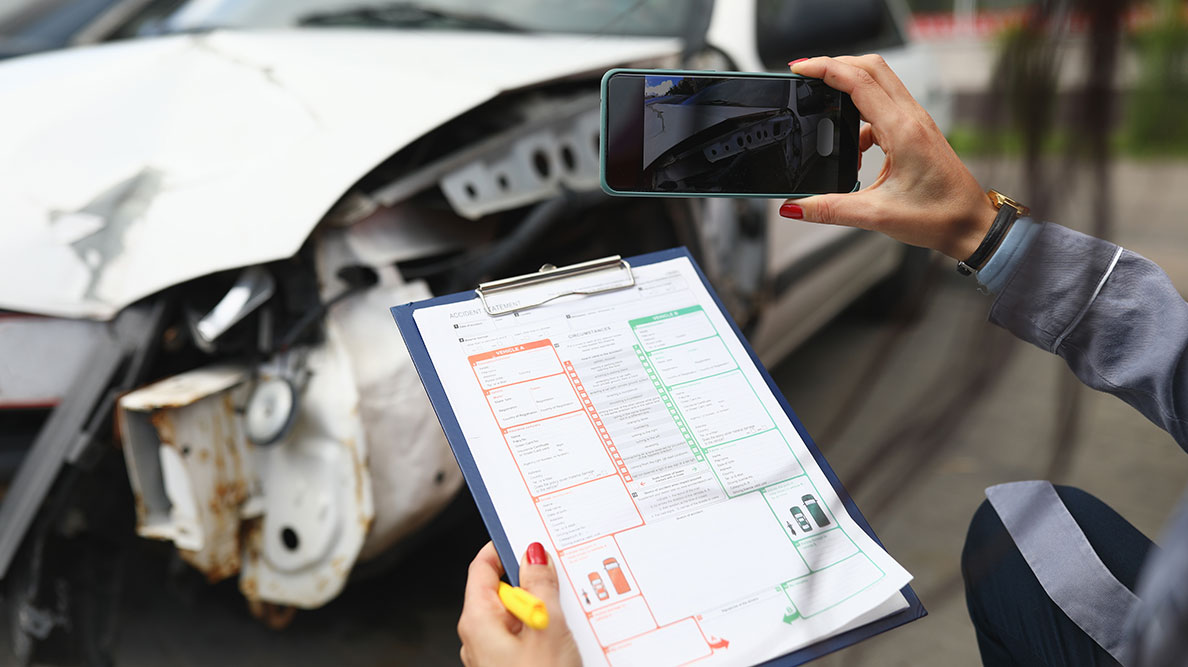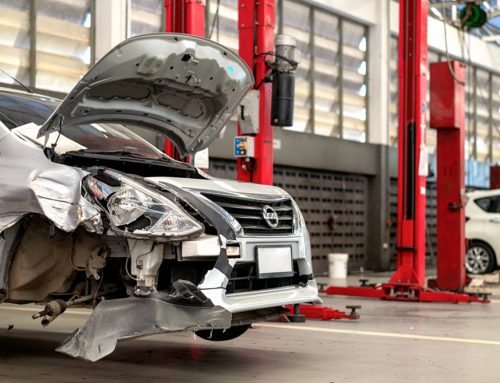As part of our conversation about the auto parts shortage that has plagued the market since 2021, Charles Aubry, Patrick Piché and I also discussed auto estimation and how valuable it is.
This article highlights my interview with Patrick Piché from Akzonobel.
Let’s first recall Patrick’s intervention in the article: Parts Shortage: Three Pros from the Body Shop Industry Provide Insights on How to Face the Challenge.
Joe doesn’t take the time to do a good estimate
Here is a classic case. It’s January, and a client comes to the shop. Her insurer asked her to have a damage estimate done on her car. Joe, the floor manager, goes outside with his pen and notepad (or better yet, with his tablet which gives him the feeling of being infallible). It’s twenty below zero and Joe is freezing while taking some notes and pictures. He barely speaks to the customer and touches little or nothing of the car, which seems to have suffered a mild frontal impact. The client returns home. Later, the floor manager will complete the estimate on his computer and wait for the insurer’s response to order parts. This scenario may surprise you, but it is a common one.
Joe has no estimating strategy. Joe has no sales strategy, and his production strategy is questionable. In this situation, as a merchant, Joe misses several opportunities to put money in his pocket.
Patrick Piché: “We may be missing the opportunity to repair the car under good conditions. By making sure that we first have an estimating process and then dismantle the vehicle’s bumper, we get the chance to do a repair with no supplements and no production interruption. In the heat of the moment, ‘clips’ and ‘fasteners’ tend to be the forgotten stars of the estimate. In times of parts shortage, running around looking for a part and back-up solutions to satisfy customers and partners, and managing courtesy vehicle rental will give you more headaches.”
Charles Aubry: “We’re missing opportunities to sell. By spending time with the client, we can do a more complete estimate that will consider the auto manufacturers’ procedures. Sometimes, there are good hours to be sold here, for an extra ‘blend’ if the insurer doesn’t cover it, or for the repair of a previous damage. Investing in customer relationships makes for a higher level of estimate-to-sale conversion. It’s a good time to build a trust-based relationship with customers and demonstrate our level of service. To add a comment on the situation described earlier, it’s all well and good to want to document your estimate with videos and photos, but you still need to take photos that make sense and serve the repair. So, we must exercise care because we are far from invincible with our tablets, even with a good app.”
In addition to what my colleagues express above, I think that we miss out on asking good questions about the history of the accident and the vehicle. The story of the accident could hint at the severity of the impact, beyond any visible damage. Nowadays, many materials can recover their shape after an impact and deceive the eye. Knowing the vehicle’s history can also let us in on its usefulness or sentimental value and help us better position ourselves to sell extras or to gain the clients’ trust.
Where to Begin and How to Finish
For some shops, dismantling all the vehicles for each file and playing detective to write estimates can seem like an insurmountable task. Shop managers don’t know where to start. How will they find the space and time to do all this?
However, investigating is exactly the estimator’s job. Focusing on this process will make them a strong link in your production chain, even a springboard.
Patrick Piché explains: “An easy step to get started is to have a clear estimating process. It could simply be deciding that an estimate is done from the rear to the front of a vehicle. You can choose how prior damage is documented and communicated to clients, when to document the auto makers’ process in the estimate, how to establish a peer review process and finally, provide guidelines as to whether and when to dismantle the vehicle. Start with small simple steps. The goal is to improve progressively and to master each step.
The sooner you identify a part that needs to be replaced, the less time you’ll have to struggle with it later, even if it’s only to report it to the insurance company. The insurer will more likely accept repairs and parts found during the initial estimate. If supplements are needed, you’ll need to spend time convincing the insurer to get to the same results and maybe lose some feathers along the way.”
Patrick continues: “Investing time in estimating, purchasing, and preparing parts will ensure a smooth repair and contribute to the shop’s productivity. We often hold back on using experimented technicians to help estimators, either to support them during the estimate or to perform simple cross-checks. But taking advantage of the experience and wisdom of our veterans can profit the upcoming repair. It’s a good investment. Rather than wasting the technicians’ time, sending them on a wild goose chase to find missing parts, we might as well invest their time in actions that will benefit the shop.”
Sometimes, shops just don’t know where to do a thorough estimate. They don’t have estimating stations and all the repair stations are taken. It takes a bit of creativity and discipline. A simple solution to manage the different repair types is to create a calendar, visible to all, that includes your washing stations and estimating stations. You can start with medium severity repairs and above. The goal is to start somewhere and see the benefits of incorporating this best practice into your production process.
Charles cautions us: “When trying a new process, it’s important to give it time to generate results. Trying to dismantle vehicles for two days while your technicians keep complaining that the estimate is incomplete is a bit normal. Your first repairs that were estimated with the new process will start in a few weeks and your financial results will speak for themselves a few months after. You must let time do its work and not throw in the towel too quickly.”
The Infamous Photo Estimates
Photo estimates create many challenges for body shops. It’s a growing trend, and obviously, no one perfectly masters it yet. It’s a fascinating subject to which we will devote a future article.
But, for the benefit of this article, you should know that one of the best practices developed by one of our clients operating on a modest budget was to give his parts clerk access to ProgiSync. This allowed him to validate the part choices based on the estimates and photos. He could, for example, verify if the right type of headlamp was entered on the estimate, correct the estimate, and order the right part. This is an example of a simple process you can add to your damage estimating strategy.
It’s More Than a Simple Repair Process, it’s a Way to Stand Out.
Patrick Piché concludes: “The work is simply more harmonious, ‘leaner.’ Technicians get to finish what they started, and it pays off in terms of quality of life at work.
When a technician starts his day with a cart full of parts that are ready and knows that he has everything he needs to do the repair, it’s good for his morale and the pride he puts in his work.
In a labour shortage, giving a new technician a tour of the shop is well worth it, both to attract labour and to retain it. It’s no fun for a technician to start a repair only to interrupt it due to an unforeseen event, move the car out of the repair bay and put the job on hold.
It’s no more fun for the owner. His opportunity cost of handling the vehicle instead of repairing it is time poorly spent. Ideally, we want our technicians to spend most of their time doing what adds value to them, but also what they love, which is repairing vehicles.”
In Conclusion, Let’s Talk Hockey
Let’s take the example of a hockey game. A game is usually played in three periods of twenty minutes. It’s what they show us on camera. But to have a good season and win the cup, the players must work much harder than what we see on TV.
After each game, they question themselves, adjust, and study the opponent.
We can draw a parallel with production. Repairs are just the hockey game. If we don’t invest time before and after the repairs to win, our collision season may be lacking, and be very far from what we can really do.
Author: Alexandre Rocheleau
Collaboration: Charles Aubry, Patrick Piché
Translation: Sophie Larocque
Editing: Émilie Blanchette





